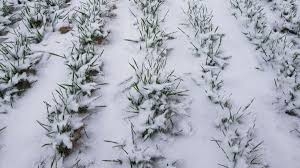Heavy rains in South America are improving prospects for soybean and corn crops

In December and January, traders' attention will be focused on the weather in South America, where the weather conditions are favorable for sowing and obtaining seedlings, which increases the pressure on global quotations.
Heavy rains in almost the entire territory of Brazil allowed farmers to complete the sowing of soybeans at the optimal time. Additional rain will continue to improve crop conditions in the coming days, but heavy downpours could lead to flooding in southern areas.
In Argentina, the front brought heavy rains to soybean and corn growing areas, which will continue next week. 35% of the area is planted with soybeans in the country, and favorable weather for sowing may lead to an increase in the area planted, as in Brazil.
Rainfall is expected to be heavier in the north, while the central and southern regions will experience a moisture deficit. A stronger La Niña could lead to heat and drought later in the season, so the more rain we get now, the better the chance of a good harvest.
This week's cyclone brought cold air to the Midwest, Central and Southern Plains with rain and snow that will replenish soil moisture and protect crops with a layer of snow before temperatures drop next week. The rains have raised water levels in the Mississippi, allowing for an increase in grain export shipments by barge.
In Europe, next week there will be heavy precipitation, which will affect the southeast, where a lack of moisture was felt. This will improve the condition of the crops and may lead to an increase in the area of sowing winter crops against the background of warm autumn weather.
Heavy rains in eastern Australia are delaying the harvest of winter wheat and canola, but helping the planting and establishment of sorghum and cotton. Dry weather next week will speed up harvesting.
Minor precipitation in the form of snow and rain occurred in Ukraine , but their amount was not enough to accumulate moisture reserves for the next season. Air temperatures, after dropping to -2..-5 o C, will rise to 0 o C and above next week, but significant precipitation is not expected.
Temperatures are above normal in almost the entire territory of the Russian Federation, and a sufficient layer of snow cover has formed, with the exception of the south of the Central Federal District and the southwest of the Volga Federal District.


